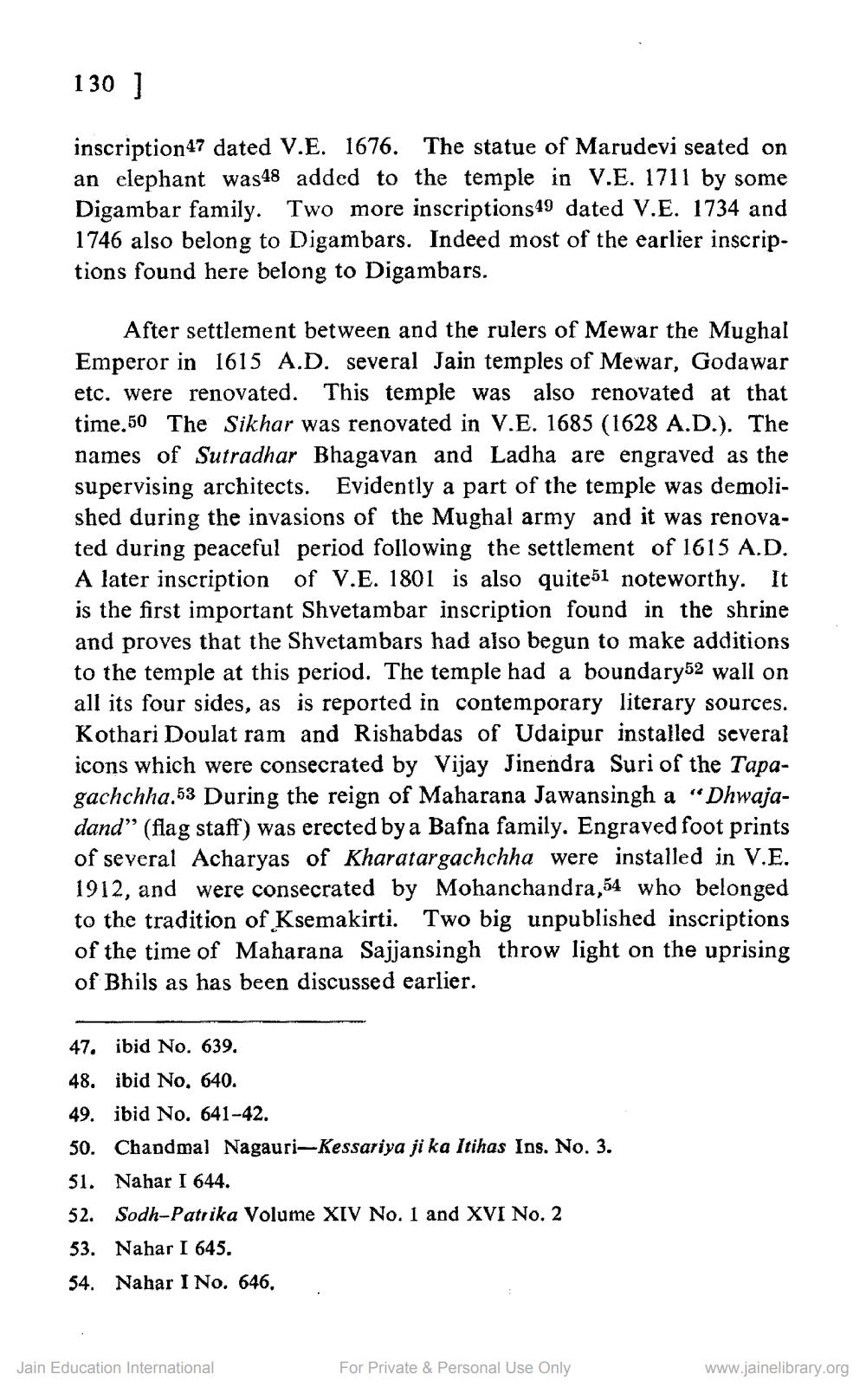________________
130 ]
inscription47 dated V.E. 1676. The statue of Marudevi seated on an elephant was48 added to the temple in V.E. 1711 by some Digambar family. Two more inscriptions 49 dated V.E. 1734 and 1746 also belong to Digambars. Indeed most of the earlier inscrip. tions found here belong to Digambars.
After settlement between and the rulers of Mewar the Mughal Emperor in 1615 A.D. several Jain temples of Mewar, Godawar etc. were renovated. This temple was also renovated at that time.50 The Sikhar was renovated in V.E. 1685 (1628 A.D.). The names of Sutradhar Bhagavan and Ladha are engraved as the supervising architects. Evidently a part of the temple was demolished during the invasions of the Mughal army and it was renovated during peaceful period following the settlement of 1615 A.D. A later inscription of V.E. 1801 is also quite51 noteworthy. It is the first important Shvetambar inscription found in the shrine and proves that the Shvetambars had also begun to make additions to the temple at this period. The temple had a boundary52 wall on all its four sides, as is reported in contemporary literary sources. Kothari Doulat ram and Rishabdas of Udaipur installed several icons which were consecrated by Vijay Jinendra Suri of the Tapagachchha.53 During the reign of Maharana Jawansingh a “Dhwajadand” (flag staff) was erected by a Bafna family. Engraved foot prints of several Acharyas of Kharatargachchha were installed in V.E. 1912, and were consecrated by Mohanchandra,54 who belonged to the tradition of Ksemakirti. Two big unpublished inscriptions of the time of Maharana Sajjansingh throw light on the uprising of Bhils as has been discussed earlier.
47. ibid No. 639. 48. ibid No, 640. 49. ibid No. 641-42. 50. Chandmal Nagauri-Kessariya ji ka Itihas Ins. No. 3. 51. Nahar I 644. 52. Sodh-Patrika Volume XIV No. 1 and XVI No. 2 53. Nahar I 645. 54. Nahar I No. 646.
Jain Education International
For Private & Personal Use Only
www.jainelibrary.org




